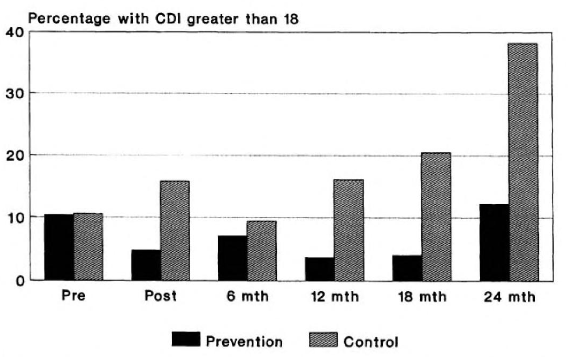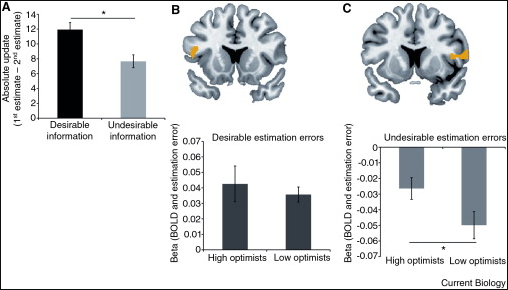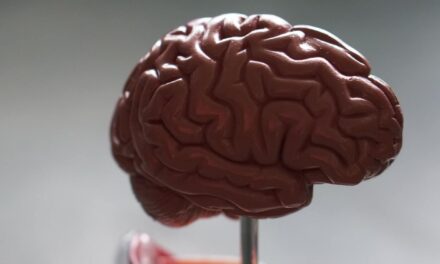Abstract
In this paper, we attempt to answer the two questions: “How do different types of optimism affect child development and adolescence?” and “How is the brain involved with optimistic thinking across the age spectrum?”.
For the former question, we look through three distinguished forms of optimism; namely dispositional optimism, attributional optimism, and optimism bias (sometimes known as “unrealistic optimism”). We found that dispositional and attributional optimism are closely related and have very positive effects on psychological health and even, to an extent, physical health. However, while optimism bias was largely found to be beneficial in terms of motivation and self-esteem, it seemed that extreme cases of it could encourage people to be more reckless and not consider the negative consequences of their actions.
We also concluded that being raised in a stable and healthy environment impacts how we mature and grow into adulthood. Having a healthy parent-child relationship not only has a positive impact on brain development during adolescence, but it also encourages a child to have an optimistic outlook on life. Every experience a child has from adolescence into adulthood impacts the furtherance of brain development as every day we are constantly learning new things and having new interactions with different people. As a result, we experience cognitive growth and develop social skills over time.
For the latter question, we look into the regions of the brain that are active in those that measure highly on the LOT-R scale, which measures how optimistic a person is.
Introduction
Over the last few decades, different types of the optimism concepts have been suggested, including “dispositional optimism”, “attributional style”, and “optimism bias.” Scheier and Carver theorized that a part of optimism is dispositional. This refers to optimism being an inherent characteristic trait in a person, whereby patterns of thinking, feeling, and behaving reflect optimism. It is suggested that dispositional optimism is responsible for how people interpret events, maintain positive expectations in the future, and use coping strategies. Peterson and Seligman (1987) describe optimism as an “attributional style” – how an individual tends to attribute events in their lives to different causes. Specifically, optimists attribute events to external, unstable, and specific causes. Weinstein describes another concept of optimism known as “optimism bias”, or more prevalently as “unrealistic optimism”, which refers to the cognitive tendency to underestimate risks. He contends that optimism bias can be traced to two sources: cognitive factors, such as a lack of information, and motivational natures, relating to the nature of defending one’s self-esteem.
Twenty-five years prior, researchers began to explore and evaluate whether an optimistic way of living could be taught to children, specifically to those who behaved in a pessimistic and depressive manner. In the eighth chapter of the book “Coping: The Psychology of What Works” (Snyder, 1999), it is identified that an increasing amount of children at the time were becoming depressed at younger ages. Contemporary estimates stated that “almost 10% of children experience clinical depression before the age of 14 and up to 20% of adolescents have a major depressive episode before the end of their high school years” (Snyder, 1999). Since then, these figures have only increased, with Jang et al. (2020) finding that nearly 40% of children in the US experienced pediatric depression. However, Snyder evaluated that an optimistic way of living could be taught to young and neuroplastic children by way of the Penn Optimism Program (POP). He stated that the POP is largely based on teaching the skills required to be an optimist, which are highlighted throughout the chapter, while also stating “These [skills] are complemented with lessons on assertiveness, negotiation, relaxation techniques, anger, and sadness control, dealing with procrastination, social skills and decision making”. However, the extensive and complex structure of optimism means that this trial alone is not enough to answer all of our questions. The question of different cultures and their effect on optimism arises. For example, there are great cultural differences in Syria compared to the West, and so various culturally exclusive pressures placed on children will likely make a difference in the rates of optimism. This is especially influential in differences in optimism between boys and girls (Abdullah, 2018).
Taking a biological perspective on optimism unveils the importance of brain areas such as the Default Mode Network (DMN), anterior cingulate cortex, and prefrontal cortex, which exert maximal influence on the development of optimism. When considering the antithesis of optimism, individuals with high neuroticism display higher levels of DMN activation when hearing criticism (compared to low neuroticism scorers). Similarly, the anterior cingulate cortex is involved in imagining the future and processing of self-referential information. It is of paramount importance to examine brain areas involved in optimism; the development of such areas during childhood ultimately determines the capacity to generate positive feelings about the future.
How do different types of optimism affect child development and adolescence?
Dispositional optimism and its effects on child development
Dispositional optimism is the generalized tendency for an individual to expect good outcomes in life. When people with high dispositional optimism think about the future, they recognize challenges but believe they will come to a positive conclusion. Unlike the other types of optimism – attributional style and unrealistic optimism – dispositional optimism is stable (Scheier & Carver, 2018). In other words, people rarely make active changes to their expectations for positive outcomes – dispositional optimism is an inherent trait.
There have been numerous studies that have shown a negative correlation between dispositional optimism and depression, especially for adolescents. The prevalence of depressive episodes is higher in adolescence than in adulthood. Fortunately, a robust linear increase in dispositional optimism from adolescence until emerging adulthood (Renaud et al., 2019) is often present to offset rates of depression. For example, in adolescents with higher levels of dispositional optimism, academic challenges may be viewed as an opportunity for learning and growth rather than an insurmountable challenge. Lower levels of dispositional optimism, on the other hand, engenders dysfunctional or harmful expectations about one’s future, which leads to more severe depressive symptoms. Optimistic adolescents, according to multiple studies, are consistently shown to have fewer depressive symptoms; Patton et al. (2011) presented this in a study where optimistic Australian adolescents (between the ages of 12-14 years) displayed lower rates of adolescent health risks such as depressive symptoms, substance use, and antisocial behavior. The cause of increased dispositional optimism in adolescents is theorized to be due to the increase of internal locus of control in adolescence (Uribe et al., 2021), whereby causes of events are attributed to one’s actions rather than external factors such as chance or luck. It is believed this is because adolescents have fewer constraints than during many other phases in their lives and have access to more available opportunities, increasing the experience of success.
Higher dispositional optimism levels have been shown to also increase the effort adolescents dedicate to life pursuits. According to the expectancy-value theory of achievement motivation, the level of commitment to an achievement-related behavior is directly linked to its expectancy and value (Wigfield, 1994). Since dispositional optimism refers to the level of positive expectations people have assumed for the future, people with higher dispositional optimism would therefore put more effort into their corresponding actions to meet and achieve their expectations. This increase in effort has been shown to play a role in the robust positive association between dispositional optimism and physical health, as healthy habits like dietary behaviors and exercise are more firmly established in adolescence than in early childhood periods. Being an important factor of physical health, dispositional optimism levels can be used as an indicator for improved cardiovascular health, immune system function, reduced pain, and other physical health outcomes (Rasmussen et al., 2009).
High levels of dispositional optimism have also been shown to promote better management of stressful situations. This corresponds to lower risks of developing physiological problems from stress, such as increases in heart rate and elevated levels of stress hormones and blood pressure. With higher levels of dispositional optimism, an individual can manage stressful situations through better coping strategies (Nes & Segerstrom, 2006). This was exemplified in adolescents when Puskar et al. (1999) showed that optimism in teenagers living in rural areas not only relates to fewer depressive symptoms but also to more frequent use of problem-focused coping strategies, which are flexibly changed to meet the demands of current stresses, engendering more satisfaction to life.
Overall, dispositional optimism in adolescents has been shown to have a positive correlation with their well-being. Dispositional optimism can stem from having robust self-reliance, exerting more effort in pursuits, and better coping strategies. Adolescents with higher levels of dispositional optimism often face lower risks of developing depressive symptoms, have better physical health, as well as improved resilience with stressful situations.
Attributional optimism and its effects on child development
Once again coming back to chapter eight of C.R. Snyder’s book “Coping: The Psychology of What Works” (1999), he explains that there are differences between an optimistic and pessimistic manner of identifying causes of problems. These causes can be described as internal, external, stable, unstable, global or specific. Snyder uses the appropriate example of a child arguing with her friend. An internal explanation for the argument would be blaming herself for the argument; an external explanation would say that the argument is the fault of the other person or the given circumstances (e.g. their parents have recently divorced). A stable cause does not and cannot change, such as the child believing that she has always been anti-social; an unstable cause can and often does change, such as the child believing that the dynamics of all friendships fluctuate. A global cause is large and not easily dealt with, such as the child assuming that their entire personality is not suited to social interaction; a specific cause is small and easier to solve, such as the child acknowledging that she is too tired to console her friend at that time. While pessimists explain problems in terms of internal, stable and global causes, optimists explain problems in terms of external, unstable, and specific causes.
A (hypothetical) example showing the effects of attributional optimism used in this chapter is a pessimistic boy called Greg who is rejected by a girl at a school dance. He identifies the cause of this to be that he is ugly and that nobody likes him. Consequently, he goes and stands in the corner of the room, does not dance, and is miserable for the rest of the evening. When Greg attributes the causes of the problem to be internal, stable and global, he gives up, remains unhappy, and does not socialize.
However, suppose Greg were to respond to the situation by identifying external, unstable and specific causes (such as this specific girl not liking him or not wanting to dance at this moment in time). In that case, his overall response will be far more positive. He may experience some amount of sadness, but, he is far less likely to immediately assume that the reason for his rejection is because nobody likes him. His more optimistic thoughts will lead to him trying to socialize elsewhere, which will likely eventually result in him finding someone to dance with.
This more optimistic manner of cause attribution is taught in the aforementioned Penn Optimism Program. Snyder mentions that the optimistic way of problem-solving by attributing causes positively (attributional optimism) is necessary for a child to take control of the situation and to make changes to solve problems. The effectiveness of POP was investigated by delivering it to a group of children in the fifth and sixth grades in two different middle schools near Philadelphia. Half the children underwent the teachings involved in POP (as described in the introduction), and the other half (as a control group) did not receive the POP but were still measured in terms of their rate of depression. The results after two years are shown at the bottom of this section and show that POP significantly reduces the rate of depression in children of this age. A CDI (Children Depression Inventory) score greater than 18 represents a child showing moderate to severe symptoms of depression.

Figure 1: Comparison of CDI after POP versus control (no POP). The graph shows the necessity of optimistically attributing problems to external, unstable and specific causes to prevent depression and to maintain an optimistic outlook throughout the development to adulthood. Without such a mindset, children may grow up lacking the ability to make positive changes in their lives.
Unrealistic optimism and its effects on child development
Unrealistic optimism or optimism bias is a form of optimism whereby people overestimate the positive outcomes of the future, despite having evidence to suggest the contrary. A study conducted by Sharot (2011) showed that optimistic expectations remain steadfast even in the face of information that shows a more negative reality. Individuals were asked to predict the probability of certain events happening in their lifetime (examples given were events such as burglary and Alzheimer’s Disease). They were subsequently shown the actual percentage chance of these events. They were then asked to update their estimate with the knowledge of the actual probability. When the estimated chance was lower than the actual chance, individuals often did not change their answers significantly. An example used in the study is that an individual is asked for the percentage chance that they will develop cancer in their lifetime. If an optimistically biased individual guesses the chance to be 10%, but the actual chance is 40%, then their initial answer will not change much (they may update it to a figure akin to 20%). However, in cases where the actual percentage chance was lower than the estimate of a participant, it was observed that these estimates were usually changed to match the chance of reality. If an individual guessed the chance of cancer to be 50%, they would subsequently update it to 40% upon discovering the actual percentage chance. This study concluded that selectively updating beliefs in response to positive information (biased optimism) creates a form of optimism that is resistant to change.

Figure 2: The right inferior frontal gyrus of these biased optimists showed a lack of activity that reflected negatively updating expectations (figure C). However, all optimists along the LOT-R scale (a scale of how optimistic a person is) showed increased activity in areas of their prefrontal cortex when positively updating expectations (figure B). The study also concluded that optimism is tied to struggling to lower high expectations and excelling in raising low expectations. Adopted from Sharot (2011).
More generally, Holzberg et al. (1996) found that “both somatic and cognitive symptoms of depression significantly correlate with psychosocial functioning”. Sharot (2011) also notes that a lack of optimism is associated with stress and anxiety. Sharot (2011) concludes that optimism is important to one’s mental well-being, noting that chronic stress causes over-activation of the autonomic nervous system and the hypothalamic-pituitary-adrenocortical axis. The relationship between optimism and health and well-being is especially important in children and adolescents, as it is crucial to their cognitive development and mental preparation for entering adulthood. This is particularly relevant when it comes to constructing relationships with their peers. Sharot (2011) states that optimism also promotes health-conscious actions, such as exercise and healthy eating, which are also key to healthy physical development. However, extreme cases of unrealistic optimism can encourage irresponsible behaviors and neglect of prophylactic actions, as these individuals may not expect negative consequences to their actions. The cause of this irresponsibility in children may not necessarily be optimism bias, as they may not even be aware of the future consequences of such activities. Extreme optimism bias may lead to children being more reckless in adulthood. However, optimism bias can be important in children as a form of motivation – believing that things will turn out well is important for encouraging children to experience and try new things.
How is the brain involved in optimistic thinking across the age spectrum?
The Default Mode Network, other related areas and neurotransmitters
The Default Mode Network (DMN) is a group of functionally connected brain regions including the dorsal medial prefrontal cortex and posterior cingulate cortex. It also plays a crucial role in optimistic thinking. Ruby’s (2013) findings support the concept that the DMN is activated when the brain is introspectively engaged as well as it playing a role in optimistic thinking: when thinking about the self and the future, subsequent thoughts are more likely to be positive when the DMN is engaged.
Concurrently, atypical patterns of DMN activity have implications for developing Post Traumatic Stress Disorder (PTSD). Depressive symptoms associated with PTSD are associated with difficulties imagining future events, the antithesis of optimism. Similarly, low family income is associated with a decreased volume of areas such as the left hippocampus and insula cortex, all of which are involved in the functioning of the DMN (Noble e. al., 2012). Furthermore, adults who experienced chronic poverty displayed reduced DMN connectivity (Sripada et al., 2014). This collective interplay of environmental stress and physiological changes illustrates the power of the DMN in preventing positive thoughts.
On the other hand, the “self-referential activity” of the DMN wherein personal experiences are labelled as positive or negative (Muscatell et al., 2012) explains the resilience seen in optimistic thinkers. This becomes especially important during childhood and adolescence when the strength of the DMN’s functional connectivity increases. As healthy individuals tend to evaluate themselves positively rather than negatively (Baumeister, 1999), abnormal functioning of the DMN can be implicated in pessimistic thinking.
Alternatively, the prefrontal cortex (PFC) could be involved in trait optimism (the tendency to expect positive outcomes in the future), with its main function being regulating thoughts and emotions. Two studies based on task-related fMRI (functional magnetic resonance imaging) demonstrated increased activity in PFC regions when participants were asked to imagine future positive events (Sharot, 2011; Sharot, 2007). Moreover, the orbitofrontal cortex (OFC) is a prefrontal cortex region which contributes to reward and approach-oriented processing (Phelps et al., 2014; Eddington et al., 2007), both of which may underpin the positive cognitive biases of optimistic individuals. In addition to propelling unconscious biases, the OFC is activated when processing positive affect (Kringelbach & Berridge, 2009), such that optimistic thinking may act as a buffer against anxiety. This is supported by Dolcos et al.’s (2016) findings, which portrayed a negative association between trait optimism and anxiety symptoms.
Returning to optimism bias (OB), the inferior frontal gyrus (IFG) and the rostral anterior cingulate cortex (rACC) are involved in dismissing undesirable information about the self in those with higher levels of optimism (Sharot et al., 2011). In addition to the IFG and rACC, Kuzmanovic et al. (2016) found that parts of the neural reward circuitry, such as the ventral striatum and the thalamus, also played roles in OB. Moreover, higher grey matter volume in the thalamus can be linked to improved regulation of emotions, which is a hallmark of optimistic thinking.
Optimistic thinking can be attributed to a strong inner locus of control (individuals believe they are active agents in control of their futures) which in turn can be explained by activation of the left hemisphere. This is supported by Harmon Jones et al. (2003) where EEG data showed greater left hemisphere activation in participants who believed they could influence a major decision in comparison to participants who were led to believe they were powerless. The left hemisphere is also more attuned to positive stimuli: when a word had positive connotations and was directed at the right visual field (RVF), participants’ attentions shifted greatly to the RVF (Kakolewski, 1999). Concurrently, on the other side of the dichotomy, a strong external locus of control is associated with the activation of the right hemisphere. Thus, optimistic thinking may be left-lateralized and simultaneously localized to certain brain regions.
The action of neurotransmitters should also be considered in optimism. For example, dopamine enhances OB in individuals, especially as it modulates reward learning: Sharot et al. (2012) administered dihydroxy-L-phenylalanine to participants, thus magnifying dopaminergic function. In turn, the researchers found that the ability to incorporate undesirable information in accounts of the future was impaired. This pattern of updating estimates of the world is similar to that seen in those high in optimism (Sharot, 2011), and therefore suggests that optimism may be partially underlied by an increase in dopaminergic activity.
Overall, key brain areas such as the DMN and OFC as well as neurotransmitters such as dopamine work in coherence with the environment to influence trait optimism.
Development of brain areas during childhood
Parental bonding is important during a child’s first social interaction as it creates a safe environment during infancy. This bonding enables the mother to promptly respond to the child’s needs and to care for the newborn. According to F and R (2020), Erick Erickson, a famous psychoanalyst stated “essential trust is the first psychosocial stage.” Mcleod (2024) confirms Erickson’s theory and emphasizes the importance of this stage by saying “successful completion of each stage results in a healthy personality and the acquisition of basic virtues. Failure to complete a stage can result in a reduced ability to complete further stages and, therefore, a more unhealthy personality and sense of self.” This first stage is significant as it ensures a healthy parent-child relationship by allowing the infant to seek comfort from their parents during times of stress, also known as attachment (F & R, 2020).
Temperament is another key attribute during the first stage of developing trust as it ensures the emotional stability of a child during adolescence. This is important as it shapes a child’s approach to the world and his interaction with the environment. F and R (2020) also state that the brain grows rapidly during the first 18 months of life, especially within the amygdala and the limbic system. These parts of the brain on the right side are nonverbal during infancy as they are used to process information about their environment. During the process of child development, every encounter someone experiences from the start of childhood influences the brain. According to McCrory and Gerin (n.d.), this unique period during adolescence is very remarkable as the brain enters a stage of development called the “sensitive period”. This is when different brain pathways are shaped by experiences causing them to become more finely tuned over time. This is important because early adolescent expectations, particularly those of healthy parent-child relationships, influence how we grow into adulthood.
The brain has roughly 100 billion neurons that process and transmit information. Neurons usually receive information in a region of the cell body, and special appendages called dendrites are used to pass along information within the axon terminal. Receptors are located on the surface of the cell and are responsible for recognizing various chemicals, including substances called neurotransmitters, which are released by other neurons. This chemical connection occurs when neurotransmitters are released into a short space between neurons, forming synapses (Spear, 2010).
Synaptic connections also play a role in brain development inside the womb. Synapses form because of the fetus’s behavior in the womb, which include turning, kicking, and even sucking its thumb. All of these actions increase the growth of synapses (Ackerman, 1992). A study from McCrory and Gerin (n.d.) supports this stating that synapses can handle a significant amount of information, allowing the brain to perform complicated tasks. This includes the essential cognitive skills the body needs for survival such as breathing, seeing, hearing, motor coordination, and learning. These different tasks rely on the activity of separate brain areas that grow across childhood.
Alongside cognitive growth during adolescence, changes in skills affecting sociability like empathy and face recognition also occur. A study by Konrad et al. (2013) states that “children and adolescents often have a broader, less focal activation pattern than adults, and that the effective recruitment of neural resources increases with age.” In addition, many structural and functional imaging studies have demonstrated that the prefrontal cortex becomes more strongly connected to sensory and subcortical areas in the brain. This indicates that frontal brain regions have a stronger impact on affective and cognitive processes. Viner et al. (2017) support this study, stating that “changes in cognitive and affective processing are linked to the onset of puberty with flexibility of the frontal cortical network greater in adolescence than in adulthood.”
Adolescence is a critical period during development in which key brain areas mature and develop. “It is also a period of resilience that can ameliorate childhood setbacks and set the stage for a thriving trajectory over the life course” (National Academies of Sciences, Engineering, and Medicine; Health and Medicine Division; Division of Behavioral and Social Sciences and Education; Board on Children, Youth, and Families; Committee on the Neurobiological and Socio-behavioral Science of Adolescent Development and Its Applications, 2019). Adolescence, a significant period of change which marks the transition between childhood and adulthood, enhances physical, cognitive, and psychosocial health, developing life skills essential for longevity.
DISCUSSION
It seems that overall, different forms of optimism can affect how children and adolescents mature and develop. While dispositional optimism and attributional optimism both contribute in a largely positive manner to the well-being and mental health of children, the benefit of optimism bias is less overt and is sometimes shown to be a disadvantage in extreme cases. Concurrently, the DMN and areas of the prefrontal cortex contribute to the internal locus of control and resilience of optimistic thinkers. This leads one to question how other brain areas can be attributed to optimism, and how they collectively work together. Synaptic pruning progresses throughout the lifetime and neural connections are strengthened; it is important to monitor optimistic biases during this period of rapid growth.
There is a distinct relationship between attributional optimism and dispositional optimism in the way that people approach and solve problems. Dispositional optimists rely on the expectation that problems will be solvable, which inherently identifies them to be unstable (the nature of the problem changes often) and specific (the problem is small enough to be wholly identified and solved). This, being a key feature of attributional optimists, presents the conclusion that dispositional and attributional optimism go hand-in-hand with each other. Children may grow up with the ability to optimistically attribute causes to problems; however, early on in the development of these neural connections, they may not necessarily develop the expectation that their problems will be solvable. With experience of optimistically attributing causes, children may develop dispositional optimism. It can therefore be proposed that attributional optimism is sufficient and necessary for dispositional optimism to develop and that dispositional optimism is sufficient but not necessary for attributional optimism.
As concluded previously, dispositional optimism enables adolescents to make more of a conscious effort towards their aims and goals. Additionally, with adolescence being the sensitive period, where neuroplasticity is increased compared to adulthood, it would seem that dispositional optimism advances the rate at which neural pathways are formed since increased ambitious effort synergizes with the sensitive period. Therefore, it can be concluded that dispositional optimism can be correlated with increased neuroplasticity.
Even though we have researched much exceptional information, there are various limitations to the level of detail with which we can answer our questions. For example, since we are unable to conduct any experiments of our own, we can only rely on the research of others. This forces us to make connections between research articles with different intentions in order to answer our questions. As a result, we cannot necessarily obtain the exact information we desire. Furthermore, the readability of the articles that we’ve researched as such may be misinterpreted due to language barriers or reader error. Therefore, the writer’s original intention may not be properly communicated. Additionally, due to research possibly being outdated, contemporary conclusions may differ from conclusions that may be drawn nowadays.
With there being such information regarding these different forms of optimism, adolescents and more cognitively mature children may familiarize themselves with them. In turn, this may result in them beginning to reconsider their way of thinking. This is especially important at young ages, where cases of depression are more frequent. In turn, this may reform the pessimistic ways of thinking that is common in adolescents. The manners of thinking developed in adolescence seem to be held onto as individuals cognitively mature, and with individuals being seen to have health improvements as a result of optimism, it is obvious that adolescents adopting an optimistic way of thinking can only benefit from it.
There are ways that we could probe deeper into the details of these questions. As most of our research mainly focused on the individualistic perspective on optimism, further research can focus more on the societal and social pressures that could have an effect on people, specifically with people exiting their adolescence stages. Due to the lack of information that we were able to find that specifically shows brain activity in regards to optimistic thinking, brain scan equipment such as EEG and fMRI can be used for a future experiment to measure optimism levels across the age spectrum.
CONCLUSION
In conclusion to our first question, while dispositional and attributional optimism go hand-in-hand with one another in terms of their effects on adolescence (such as enhancing the quality of life by reducing negative emotional and physiological symptoms), optimism bias (or unrealistic optimism) engenders consequences that are more negative than those of the first two. Unrealistic optimists tend to be more motivated to put in effort in accordance with their lofty visualizations of succeeding. Extreme cases of optimism bias, however, may lead to neglecting prophylactic actions (such as not going to scheduled medical appointments) and increased reckless behavior (such as excessive gambling).
In conclusion to our second question, it seems that the DMN and the OFC, in partnership with neurotransmitters such as dopamine, make significant contributions to the internal locus of control and the overall resilience of those who think optimistically. It is also necessary to highlight the importance of this during adolescence, when synaptic connections begin to strengthen and cognitive and psychosocial abilities begin to mature.
Bibliography
Abdullah, M.Q. (2018). Optimism/pessimism and its relationship with locus of control among children and adolescents. Mathews Journal of Psychiatry & Mental Health, [online] 3(1), pp.1–9. Available at: https://www.mathewsopenaccess.com/full-text/optimism-pessimism-and-its-relationship-with-locus-of-control-among-children-and-adolescents.
Dolcos, S., Hu, Y., Iordan, A.D., Moore, M. & Dolcos, F. (2015). Optimism and the brain: trait optimism mediates the protective role of the orbitofrontal cortex gray matter volume against anxiety. Social Cognitive and Affective Neuroscience, 11(2), pp.263–271. doi:https://doi.org/10.1093/scan/nsv106.
Erthal, F., Bastos, A., Vilete, L., Oliveira, L., Pereira, M., Mendlowicz, M., Volchan, E. & Figueira, I. (2021). Unveiling the neural underpinnings of optimism: a systematic review. Cognitive, Affective, & Behavioral Neuroscience, 21(5), pp.895–916. doi:https://doi.org/10.3758/s13415-021-00931-8.
Hecht, D. (2013). The neural basis of optimism and pessimism. Experimental Neurobiology, [online] 22(3), pp.173–199. doi:https://doi.org/10.5607/en.2013.22.3.173.
Hiroto, D.S. & Seligman, M.E. (1975). Generality of learned helplessness in man. Journal of Personality and Social Psychology, 31(2), pp.311–327. doi:https://doi.org/10.1037/h0076270.
Holzberg, A.D., Robinson, M.E., Geisser, M.E. & Gremillion, H.A. (1996). The effects of depression and chronic pain on psychosocial and physical functioning. The Clinical Journal of Pain, 12(2), pp.118–125. doi:https://doi.org/10.1097/00002508-199606000-00006.
Jang, C.Y., Cho, E.H., Kwak, Y.S. & Kim, T. (2020). The relationship between flourishing and depression in children in the U.S. using a socioecological perspective. International Journal of Environmental Research and Public Health, 17(21), p.8246. doi:https://doi.org/10.3390/ijerph17218246.
Kathryn R. P., & Susan M. S. (1999). Optimism and its relationship to depression, coping, anger and life events in rural adolescents. Issues in Mental Health Nursing, 20(2), pp.115–130. doi:https://doi.org/10.1080/016128499248709.
Matheson, S.M., Asher, L. a&nd Bateson, M. (2008). Larger, enriched cages are associated with ‘optimistic’ response biases in captive European starlings (Sturnus vulgaris). Applied Animal Behaviour Science, 109(2-4), pp.374–383. doi:https://doi.org/10.1016/j.applanim.2007.03.007.
Nes, L.S. & Segerstrom, S.C. (2006). Dispositional optimism and coping: a meta-analytic review. Personality and Social Psychology Review, 10(3), pp.235–251. doi:https://doi.org/10.1207/s15327957pspr1003_3.
Overmier, J.B. & Seligman, M.E. (1967). Effects of inescapable shock upon subsequent escape and avoidance responding. Journal of Comparative and Physiological Psychology, 63(1), pp.28–33. doi:https://doi.org/10.1037/h0024166.
Patton, G.C., Tollit, M.M., Romaniuk, H., Spence, S.H., Sheffield, J. and Sawyer, M.G. (2011). A prospective study of the effects of optimism on adolescent health risks. Pediatrics, [online] 127(2), pp.308–316. doi:https://doi.org/10.1542/peds.2010-0748.
Peterson, C. & Seligman, M.E.P. (1987). Explanatory style and illness. Journal of Personality, 55(2), pp.237–265. doi:https://doi.org/10.1111/j.1467-6494.1987.tb00436.x.
Puri, M. and Robinson, D. (2007). Optimism and economic choice. Journal of Financial Economics, 86(1), pp.71–99. doi:https://doi.org/10.1016/j.jfineco.2006.09.003.
Rasmussen, H.N., Scheier, M.F. & Greenhouse, J.B. (2009). Optimism and physical health: a meta-analytic review. Annals of Behavioral Medicine, [online] 37(3), pp.239–256. doi:https://doi.org/10.1007/s12160-009-9111-x.
Rebello, K., Moura, L.M., Pinaya, W.H.L., Rohde, L.A. & Sato, J.R. (2018). Default Mode Network maturation and environmental adversities during Childhood. Chronic Stress, 2, p.247054701880829. doi:https://doi.org/10.1177/2470547018808295.
Renaud, J., Barker, E.T., Hendricks, C., Putnick, D.L. & Bornstein, M.H. (2019). The developmental origins and future implications of dispositional optimism in the transition to adulthood. International Journal of Behavioral Development, 43(3), pp.221–230. doi:https://doi.org/10.1177/0165025418820629.
Scheier, M.F. & Carver, C.S. (2018a). Dispositional optimism and physical health: A long look back, a quick look forward. American Psychologist, 73(9), pp.1082–1094. doi:https://doi.org/10.1037/amp0000384.
Scheier, M.F. & Carver, C.S. (2018b). Dispositional optimism and physical health: A long look back, a quick look forward. American Psychologist, 73(9), pp.1082–1094. doi:https://doi.org/10.1037/amp0000384.
Seligman, M.E. & Maier, S.F. (1967). Failure to escape traumatic shock. Journal of Experimental Psychology, 74(1), pp.1–9. doi:https://doi.org/10.1037/h0024514.
Seligman, M.E.P. (1990). Learned optimism. London: Nicholas Brealey Publishing.
Sharot, T. (2011). The optimism bias. Current Biology, [online] 21(23), pp.R941–R945. doi:https://doi.org/10.1016/j.cub.2011.10.030.
Snyder, C.R. (1999). Coping : The Psychology of What Works. [online] New York: Oxford University Press. Available at: https://books.google.co.uk/books?hl=en&lr=&id=wM_hBwAAQBAJ&oi=fnd&pg=PA165&dq=optimism+in+children&ots=kxy60KOevT&sig=AOPr3PMo15eVNVGZFz-d3M7PBLY#v=onepage&q&f=false [Accessed 7 Jul. 2024]. Chapter 8: Learned Optimism in Children.
Strunk, D.R., Lopez, H. & DeRubeis, R.J. (2006). Depressive symptoms are associated with unrealistic negative predictions of future life events. Behaviour Research and Therapy, 44(6), pp.861–882. doi:https://doi.org/10.1016/j.brat.2005.07.001.
Uribe, F.A.R., de Oliveira, S.B., Junior, A.G. & da Silva Pedroso, J. (2021). Association between the dispositional optimism and depression in young people: a systematic review and meta-analysis. Psicologia: Reflexão e Crítica, [online] 34(1). doi:https://doi.org/10.1186/s41155-021-00202-y.
Wang, S., Zhao, Y., Cheng, B., Wang, X., Yang, X., Chen, T., Suo, X. & Gong, Q. (2018). The optimistic brain: Trait optimism mediates the influence of resting-state brain activity and connectivity on anxiety in late adolescence. Human Brain Mapping, [online] 39(10), pp.3943–3955. doi:https://doi.org/10.1002/hbm.24222.
Wigfield, A. & Eccles, J.S. (2000). Expectancy–value theory of achievement motivation. Contemporary Educational Psychology, [online] 25(1), pp.68–81. doi:https://doi.org/10.1006/ceps.1999.1015.
Wu, J., Dong, D., Jackson, T., Wang, Y., Huang, J. & Chen, H. (2015). The neural correlates of optimistic and depressive tendencies of self-evaluations and resting-state Default Mode Network. Frontiers in Human Neuroscience, 9. doi:https://doi.org/10.3389/fnhum.2015.00618.




